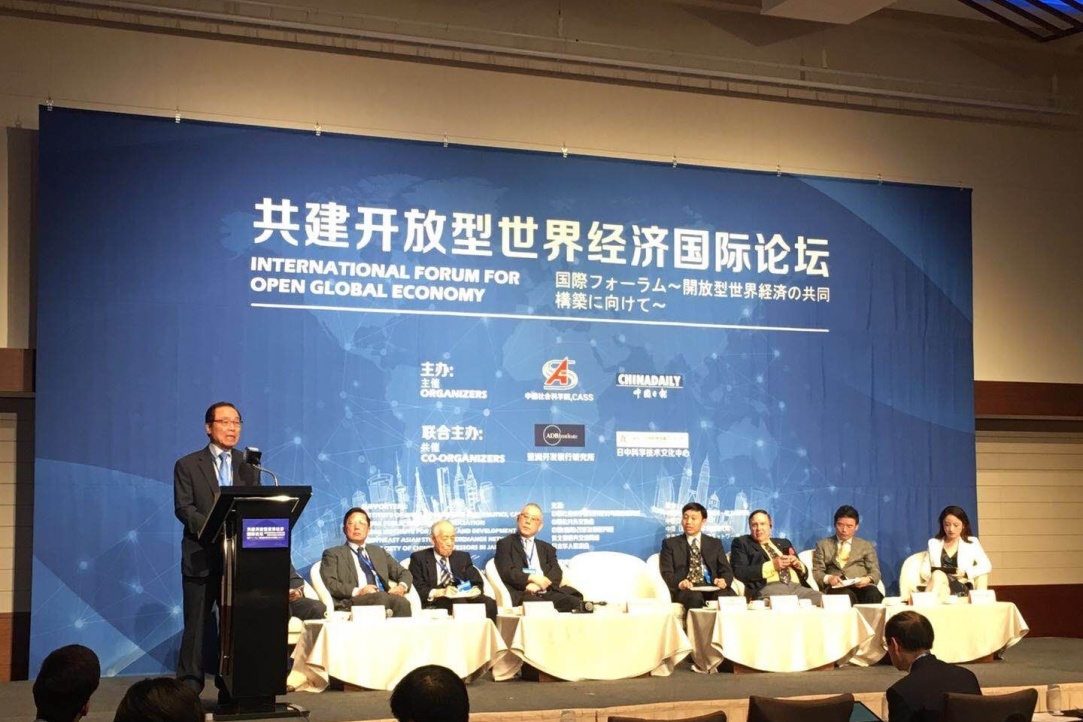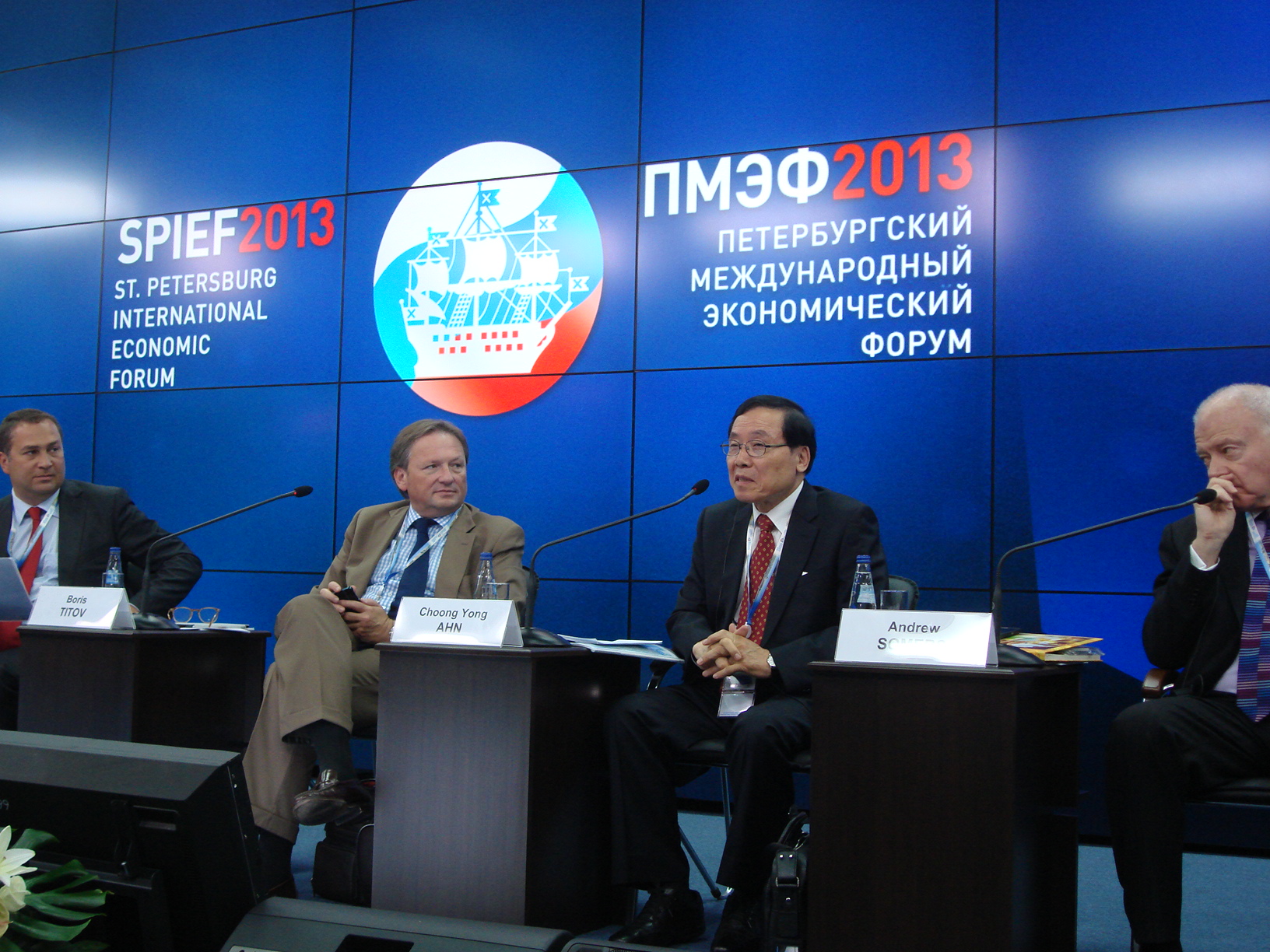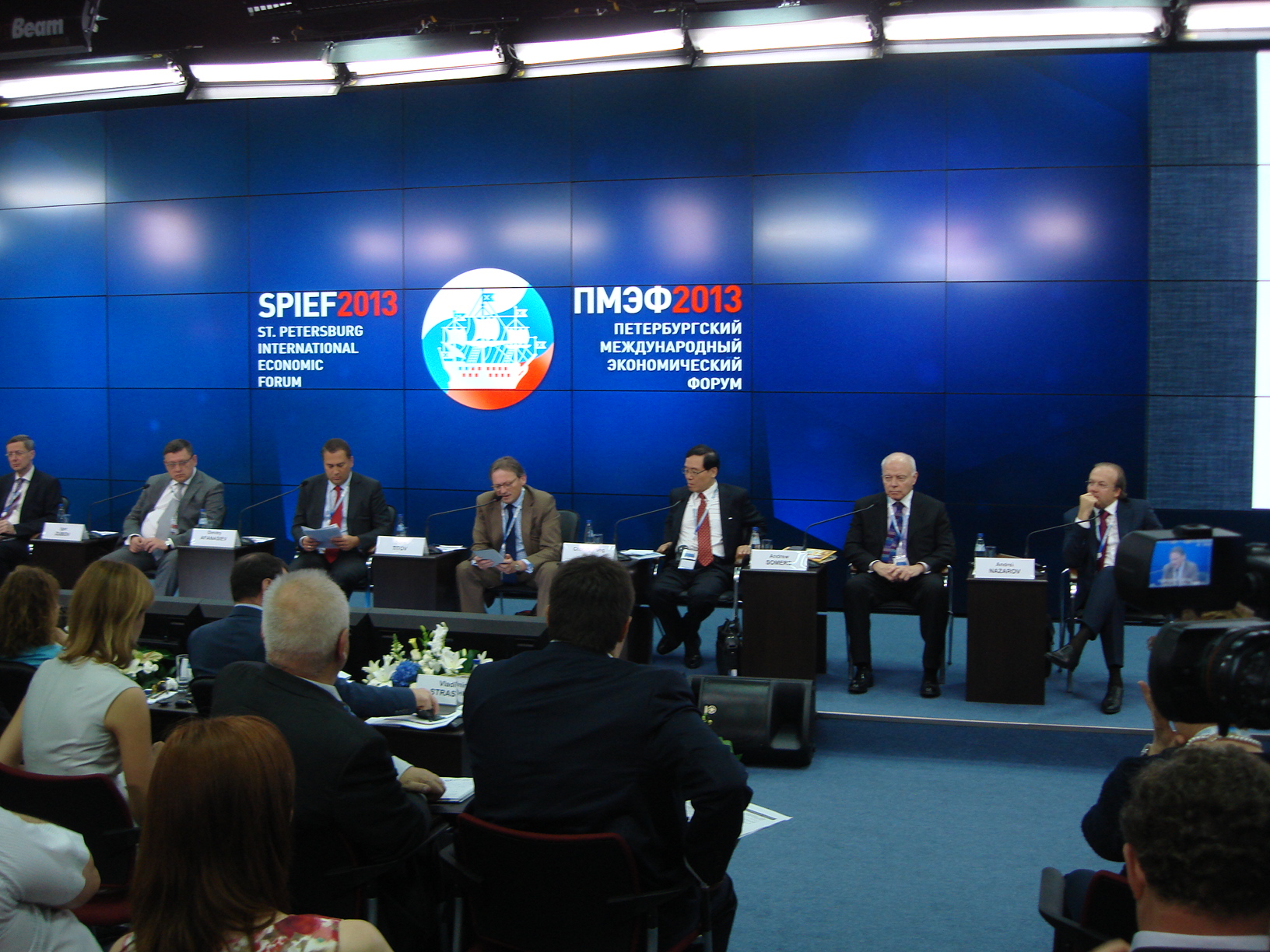Boosting National Economy: The Role of Government

On February 10, Dr. Choong-Yong Ahn, Distinguished Professor of Economics of the Graduate School of International Studies (Chung-Ang University, Seoul) will take part in an online meeting of the Economic Policy Discussion Club organized by HSE University. He will talk about Korea’s economic development and the country’s astonishingly rapid and effective industrialization. Dr Ahn has spoken with the HSE News Service about the factors that have contributed to Korea’s success and the role of government in steering the Korean economy.
Dr. Ahn is currently Distinguished Professor of Economics at the Graduate School of International Studies, Chung-Ang University, Seoul. He served as Chairman of the Korea Commission for Corporate Partnership, which is responsible for inducing voluntary collaborations and nurturing synergy between Korea’s big businesses, and small and medium enterprises. He was also Chairman of the Board of Korea Electric Power Corporation (KEPCO). He also served as Foreign Investment Ombudsman and Chairman of the Presidential Regulatory Reform Committee.
Dr Ahn has visited Russia on several occasions to meet with Russian government officials and share Korean experience of aftercare services for foreign investors in Korea, technology transfer, and open door policy.
Making the Leap
Throughout several thousand years, Korea was a poverty-stricken and agricultural economy. The Republic of Korea does not have any mineral resources, unlike resource rich Russia. For instance, Korea has to import oil from the Middle East to survive cold winter season and for industrial use. Also, the country is very mountainous and less than 20 percent of land is arable, which means that Korea must import a lot of food. This brought the need to promote exports to earn foreign currency to pay for these critical imports for sheer human survival.
In essence, Korea benefited from the global open economic system. In the 60s, the country had adopted an outward-looking development strategy to promote exports of labour-intensive products, such as wigs, footwear, garments and clothing.
The next step involved developing the heavy and the chemical industry (HCI) to run away from other East Asian economies that started to catch up with Korea’s export strategy. There was also a security reason for rapid industrialization: in 1969, President Nixon declared his doctrine of reducing the number of US troops stationed in Korea. The US demanded that Korea should defend itself by developing basic military hardware. Therefore, the country had to manufacture rifles, light tanks, and light warships to defend itself against ever-hostile North Korean aggression.
The HCI industrialization was a bold move—we had nothing in terms of technology and the resources and, more importantly, no experience. President Park Chung-hee prioritised specifically heavy and the chemical industries for government-led promotion, ranging from textiles, iron and steel, shipbuilding, to electronics and chemicals. These enterprises later became chaebols—family-owned conglomerates. The government provided a lot of industry specific and firm specific incentives as well as substantial financial resources through ‘administered credit allocation’. The government also designated specific individuals with proven managerial abilities to be in charge of those industries.
At the same time, the government encouraged private entrepreneurship through ‘the survival of the fittest’ principle by letting mismanaged firms exit from the market. Korea was very lucky to have such great entrepreneurs like Chung Ju-yung, the founder of Hyundai automotive plant, and Lee Byung-chul, the founder of Samsung Electronics.
The Korean model is unique because of government intervention in the form of heavy financing with subsidized loans, and cross-share holdings for business diversification, as well as penalties to cut off government -led financing for HCI companies which failed to compete on the global market due to serious managerial failures.
Korea’s HCIs have really gone through a series of uphill battles such as the oil shocks in the 1970s and the Asian financial crisis in 1997/98 but the national leadership as well as business leaders were fully committed—'we must do it otherwise all Koreans will starve. Most importantly, Korean security will be in great danger from North Korea’.
Now, in the time of the fourth industrial revolution and the digital economic transformation, the big chaebol groups still occupy a huge chunk of the Korean economic pie. They have become global leaders in electronics, shipbuilding, and iron and steel. The chaebols must upgrade their technological capabilities and adjust to global best practices on governance and transparent management. But what’s important is that they need to compete successfully on the global market with all the global high tech leaders.

Blend of Theory and Experience
At the start of outward-looking development, Korea looked at Japan, which does not have a significant natural resource deposit either but emerged as the second largest economy after the World War II. Korea emulated the industrial policy adopted by Japan to promote specific HCI industries with government-provided incentives. In a way, Korea took advantage of being a late comer, the notion theorised by Russia-born Harvard economics Professor Alexander Gershenkron. Late comers benefit from shortened time and lower cost of acquiring new technology and new managerial methods developed by early comers. The Korean government also believed that Korea should develop national R&D capabilities through public–private partnership.
Help from a Strong Ally
During the Vietnam War, Korea dispatched troops to Vietnam under the Korea-U.S. ally relationship. In return, Korean government requested that the US government help science and technology. So, the US provided some initial funding, know-how, and infrastructure for the launch of the Korea Institute of Science and Technology. As a result, a major science and technology institution appeared, helping the Korean government jumpstart science and technology development.
At the beginning of the Korea’s export drive, the US provided a generalised system of preference, which meant substantially reducing tariff rates for the exports from a poor country.
As Korean economy started to grow rapidly, the US also carried out some joint venture activities and American multinational firms started to invest in Korea.
The US is still the second largest foreign direct investor in Korea after the EU. Our other major economic partner is China, our immediate neighbour, as 25% of total Korean exports go to the Chinese market.
Recipe for Success
Korean economic development process was very well described in a book published by the World Bank in 1993, The East Asian Miracle: Economic Growth and Public Policy.
The secrets of this miracle are export-driven development, opening up the domestic market, bringing in competition, developing human resources, and using foreign technology.
There is an immediate link between exports and efficiency. If you focus on protecting the domestic market by raising tariffs, the competition would be limited and efficiency will suffer. Korean firms compete globally, so they must run their businesses efficiently and manufacture products that appeal to customers and learn at arm’s length the advanced practices at the global market. Also, the government should develop infrastructure, investing in highways, railways, water supply, and so on, which is a prerequisite for industrial development.
Another key factor is a highly competitive education system. Even in the early 60s, when Korea was quite a poor country, it enjoyed one of the highest literacy rates among the poorest countries. That was a tremendous asset as the government could easily train people to work in the new industries.
All people in Korea are entitled to free primary, junior, and senior high school education. There is also a major emphasis on providing various curricula in science and engineering, as well as business management.
In addition, Korean Government has encouraged Korean students to go abroad for advanced studies to earn high degrees in the US, Japanese, or European universities on government or private scholarships.
This means that students can learn about modern advances in science and technology and earn high degrees in science and engineering and management. They then have come back to Korea to work in S&T area or join the universities for advanced teaching.
Another important point is that the government recruits elite officials through high civil service examinations, which are open to all college graduates or even qualified high school ones. What’s more, the government officials must undertake on-the-job training or be placed on a overseas study programmes on a selective basis so that they stay abreast of all economic and technological developments. As a consequence, the government officials have been able to implement efficiently the national development guidelines.

Changing Government Role
In the past half century, Korean economy has undergone intensive restructuring to face the global oil shocks in the 1970s, Asian financial crisis in 1997/98, and global financial crisis of the 2000s. To overcome these crises, Korean entrepreneurs had to optimise their unprofitable business lines and to invest in technological development and R&D.
When the family controlled chaebols diversified their business lines, they kept the ownership through circular shareholding. Now, the governance system of major chaebols has been under restructuring to transform into holding companies, prohibiting circular investment among subsidiary companies to enhance transparency of business management.
Korea should continue to pursue a separation principle between ownership and management of a business group.
Under the holding company structure, big chaebols run several independent companies, so all transactions between them are carried out on a competitive basis. However, they still share a certain portion of listed shares. Also, all Korean companies belonging to chaebol groups are listed, so foreign investors own substantial portion of their shares. Therefore, the governance of chaebol groups is under scrutiny of international investors.
When Korea joined the WTO and a series of free trade agreements, the role of the government has changed to adhere to international standards for the level playing field geared towards fair competition. Direct provision of government subsidies, biased transfer pricing, or subsidised financial support are no longer practiced.
The role of the government now is to remove overlapping and outdated regulations to create a business friendly environment. Free and fair competition is the condition in which all businesses can display their creativity and improve their competitiveness. That’s the fundamental principle of the market economy.
New Challenges
A major challenge today for Korean economy is diffusing digital technology and digital management. Korea now has one of the most well-developed digital infrastructure in the world and strives towards a digital service economy.
A new free trade agreement encompassing ten ASEAN member economies plus China, Japan, Korea, Australia, and New Zealand came into effect on January 1st, this year, namely Regional Comprehensive Economic Partnership (RCEP). We are likely to see a reconfiguration of new supply chain networks. The digital trade is becoming a new intra-regional phenomenon. So, Korea wants to get on this digital trade trend as much as possible.
Responding to the newly emerging Environment, Society, and Governance (ESG) priorities, Korean chaebols work to make their internal governance system more transparent in harmony with green growth as well as inclusive growth. They are also very much concerned about the environment given the drastic climate change and the spread of the pandemic. Now, every big business is working on reducing carbon emissions as part of Korea’s new green deal.
The ESG commitments require certain strategic investments as well as new management. There are great business opportunities, especially, on the environmental front. As a result, companies that score high on ESG are loved by the consumers and the society.
Yet another challenge in Korea lies in increasingly acute income polarization, exacerbated by the pandemic. Then there is the issue of labour union activity. The labour unions believe that Korea's working class has not shared properly in the economic growth pie as much as they have contributed. So, the greatest challenge for the Korean economy at the moment is developing a synergistic partnership between labour unions and entrepreneurs.
The government also encourages big businesses to share their earnings with the poorest sector of the economy through developing synergistic partnership between small and medium enterprises (SME) and self-employed people.
Korea’s SME sector represents 99 percent of the total number of enterprises and is responsible for 88 percent of jobs. However, its productivity is just one third of that of big enterprises. Most seriously, they are technologically outdated.
The policy focus of the Korean Government now is to foster collaborations between big enterprises and small and medium enterprises so that big businesses share their technology with their suppliers. Also, big companies with overseas export networks can bring their suppliers into the global supply chains.
See also:
HSE Event Series Explores Past, Present, and Future of Russia-South Korea Relations
HSE University’s Faculty of World Economy and International Affairshosted a series of events dedicated to the 30th Anniversary of the establishment of diplomatic relations between Russia and the Republic of Korea. During the week, an international conference was held, followed by a presentation of the new Master’s programme ‘Economics, Politics and Business in Asia’, as well as a student Korean-language Olympiad.
Students of the Faculty of Economic Sciences Meet Minister of Economic Development
Russian Minister of Economic Development Maxim Oreshkin, who earned his Bachelor’s in economics in 2002 and his Master’s in economics in 2004 from HSE University, spoke to students of the Faculty of Economic Sciences about economic growth in Russia and what he learned at HSE University.
‘Isolationism Is the Pathway to Technological Degradation’
The XX April International Academic Conference continued on April 11 with a discussion on digitalization of the economy and public administration. Maxim Akimov, Deputy Prime Minister of Russia and Curator of the Digital Economy National Programme, spoke about digital business models, public administration, digitalization in industry and science, and the impact of digital technology on the job market.
‘Russia’s Economy Has Almost Exhausted Its Opportunities for Catch-Up Growth’
What is happening in the Russian economy, how can its growth be boosted, and why can it no longer develop through inertia? These were the issues discussed at the plenary session ‘Prospects for the Russian economy’ that took place as part of the XIX April HSE International Academic Conference.
'The Most Important Thing during a Time of Crisis is to Give People an Opportunity to Learn'
In an interview with RBC, Yaroslav Kuzminov, Rector of the Higher School of Economics, speaks about the problems facing Russia’s economy, the Strategy 2020, the status of higher education and about the areas worth developing.
Economic perspective on culture and diversity
On October 18-19, 2013 the conference 'Culture, Diversity, and Development' will be held in Moscow. Leonid Polishchuk, Professor, Head of the Laboratory for Applied Studies of Institutions and Social Capital at the HSE, shared his vision of the issue and introduced some participants of the conference to the HSE news service.
HSE Experts have Become Members of a Council under the Russian Government
The list of members of the Expert Council under the RF Government has been approved. Its 200 members include staff from the Higher School of Economics.


